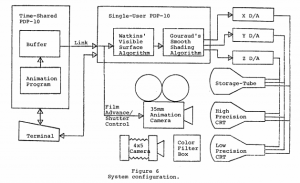Today Amazon announced new Kindles. Three are e-ink devices, like all the Kindles that have come before. Unlike all previous Kindles, none have keyboards. The cheapest is a $79 device with some basic navigation buttons. Then comes the $99 Touch, followed by the $149 Touch 3G, and, finally, the Kindle Fire.
The Fire is the most interesting of the bunch. It is a 7″ color tablet with WiFi and a custom version of Android that will sell for $199. Compare that to the Nook Color, another Android based color tablet from a bookseller which goes for $250.
Of course, before the announcement, lots of people were yammering about it as a challenger to Apple’s iPad. It’s $300 less than the cheapest iPad, but I don’t think its a good comparison. The iPad has a 10″ screen, which is large enough to support some fairly functional applications, like the Numbers spreadsheet. It’s also large enough to provide a highly usable on-screen keyboard in landscape mode. The Kindle Fire isn’t going to support the same breadth of apps.
I think the Kindle Fire is a much closer competitor to the iPod Touch. Like the iPod Touch, the Kindle Fire is strongest as a content consumption device. The larger screen makes it better for reading, for watching video, and for playing games, but it’s also less portable than the Touch, which probably matters most for music and for a lot of games.
I think the Fire is bad for pretty much any other Android tablet. Â No one is having much success going up against Apple head-to-head, so Amazon widely targeted the 7″ form factor (though rumors are that a 10″ is coming). I think they’ll do much better here than any other Android tablet since they provide a strong distribution channel and it seems they are willing to sell at or below cost in exchange for all the commerce opportunities that will come once people have the device.
It’s interesting to compare Amazon to Apple’s approaches to this general market. Â Both companies sell hardware and have electronic storefronts people can use to buy content and games for the hardware. Â Apple sells the content with thin margins to enhance the value of their high-margin hardware. Â Amazon sells the hardware with thin or negative margins to enhance the volume of low-margin content they sell.
There have been a lot of complaints about Apple’s desire to get a cut of in-app content sales, but, never the less, iPad users aren’t limited to content distributed through the App store. Â For example, even though Apple distributes TV shows, movies, and ebooks, users can get video content from Netflix and Hulu, eBooks from Barnes & Nobel, Amazon, and others. Will Amazon be as open?
One thing is clear, this is a blow to Google’s influence over Android in the tablet market. It weakens other Android-based tablets while the whole Android identity take’s a backseat to Amazon’s Kindle brand.
 This processor is interfaced to the special equipment needed to produce half-tone pictures. The other PDP-10 is time-shared, and runs under the TENEX operating system . There is a link between the machines that allows data to be transfered between them . This system allows us to take advantage of the TENEX operating system, particularly the file system, on one machine and the special half-tone display equipment on the other machine.
This processor is interfaced to the special equipment needed to produce half-tone pictures. The other PDP-10 is time-shared, and runs under the TENEX operating system . There is a link between the machines that allows data to be transfered between them . This system allows us to take advantage of the TENEX operating system, particularly the file system, on one machine and the special half-tone display equipment on the other machine.